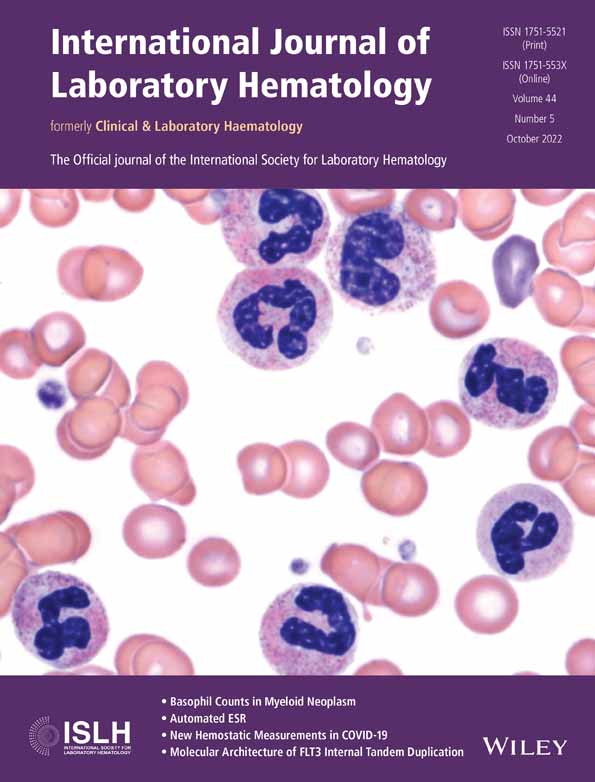Validation of a single tube 3-colour immature red blood cell screening assay for the detection and enumeration of small, medium and large paroxysmal nocturnal haemoglobinuria clones by flow cytometry
Abstract
Introduction
The reliable diagnosis of paroxysmal nocturnal haemoglobinuria (PNH) by flow cytometry is based on mandatory analysis of the erythroid, neutrophilic and monocytic lineages. In this study, we have evaluated the performance characteristics of a recently published immature red blood cell (iRBC) assay as a potential screening test for PNH by flow cytometry.
Methods
Intra- and inter-assay imprecision were determined in five replicates of small, medium and large PNH iRBC clones. Analytical and functional sensitivity was assessed by performing spiking tests for five replicates. Thirty healthy donors and 441 PNH patients were tested for evaluation of clinical specificity, sensitivity, positive and negative predictive values.
Results
Coefficients of variation (CV) for intra-/inter-assay imprecision analyses were 1.31/1.50, 3.19/2.61 and 3.99/1.58 for the big, medium and small clone sizes, respectively. Absolute values (100%) were found for both clinical specificity and sensitivity as well as for both positive and negative predictive values. The CV from 5 replicate results for 10 clustered events was 15.7%. The coefficient of determination (r2), Pearson's correlation coefficient (r) and Bland–Altman mean bias were 0.9436/0.9234/1.7 for PNH iRBC compared to PNH neutrophils and 0.9553/0.9387/2.1 for PNH iRBCs compared to PNH monocytes.
Conclusion
Our results confirm very good performance characteristics, high analytical and functional sensitivity, absolute clinical specificity and sensitivity as well as favourable correlation between PNH iRBCs and both PNH neutrophils and monocytes, suggesting that this cost-effective 3-colour iRBC assay can be used as a reliable screening test for evaluation of small, medium and large PNH clones by flow cytometry.
CONFLICT OF INTEREST
The authors have no competing interests.
Open Research
DATA AVAILABILITY STATEMENT
The data that support the findings of this study are available from the corresponding author upon reasonable request.




